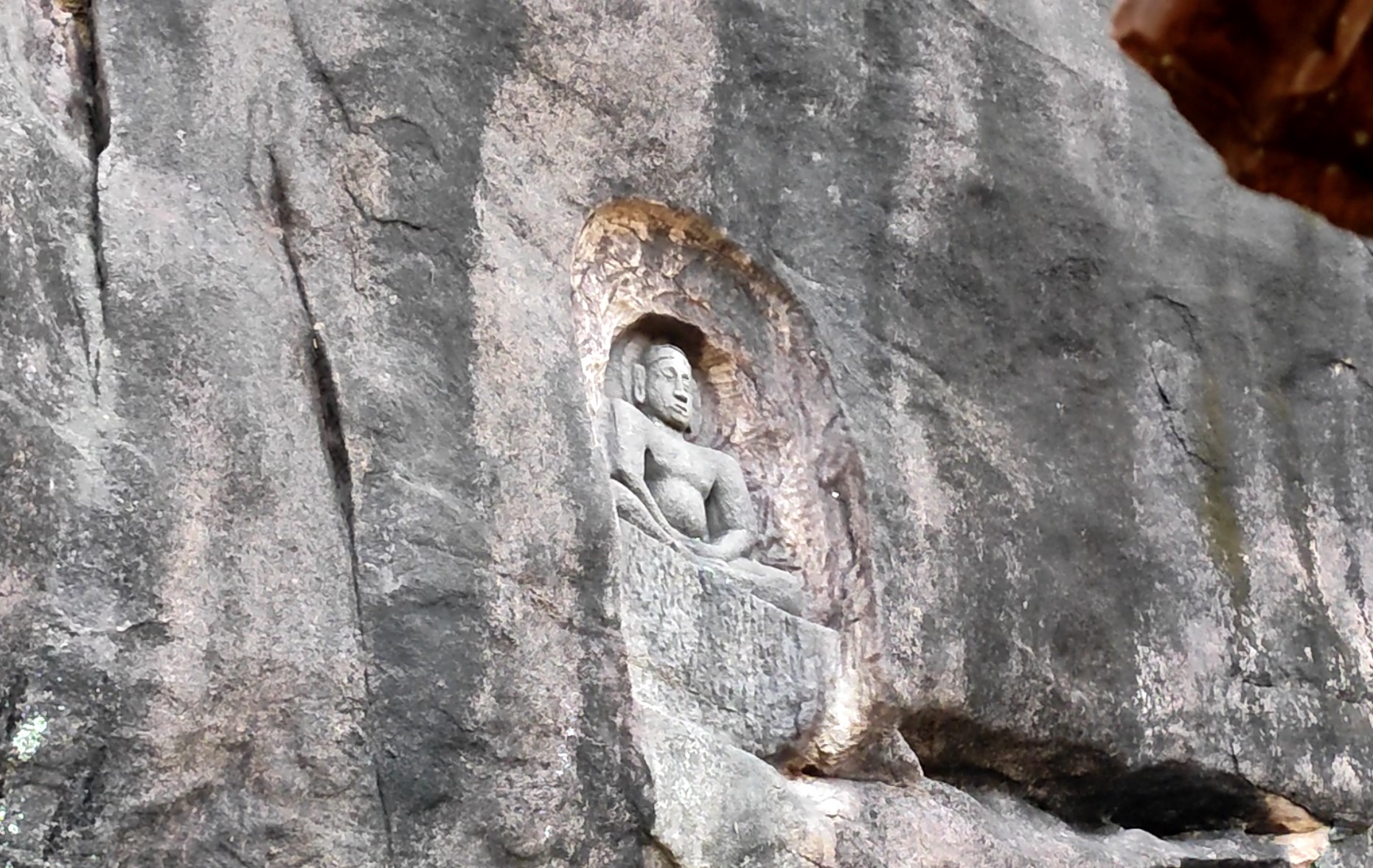People from different faiths pray at the Kallil Bhagavathy Temple for voluminous hair, better fortune, and dream homes.

Vardhaman Mahavira , the 24th Tirthankara
Belief is cast in stone, unwavering, and unbelievable, but etched in the psyche when history and legend converge.
Aeons ago, a thick forest hid Methala, around 45 km from present-day Kochi, Kerala’s commercial capital. A hunter came across an extremely beautiful woman, juggling stones in the forest.
On seeing the man — the intruder who disrupted her merry game — the woman disappeared into the blue, goes the legend.
The awestruck hunter took some time to realise that the stones hadn’t disappeared with the beauty personified. They just hung in the air, as if suspended by some invisible strings.
It then didn’t occur to the hunter that the stones were defying physics, as many today feel on seeing the huge boulder “hovering” over the roof of the Kallil Bhagavathy Temple at Methala village in Perumbavoor on the northeastern tip of Greater Cochin.
The hunter might have spoken about the miraculous beauty he had encountered deep inside the forest — and the mystery stones.
Legend has it that the beauty the hunter came across millennia ago was Bhagavathy or Goddess.
Tucked away in the thick, verdant foliage stands the Kallil Bhagavathy Temple, hidden two kilometres away from the scores of tourists breezing past Odakkali towards the more popular destination, Munnar.

Legend has it that one of the stones the Goddess was juggling with in the forest became the roof of the temple. (George Michael)
Dating back to the 3rd century BC, the temple has links to Jainism, one of the ancient three religious traditions that still exist in India. An air of mystery envelopes the tranquility of the temple.
Hit the 120 stone steps leading to the temple — the only way to the sacred destination in nature’s lap — the lightness of peace embraces the visitor. As the ascend continues, the humungous, mystic boulder becomes visible.
“Be certain to follow all temple protocols while entering the premises,” priest Abiram K gives a friendly heads-up.
The visitor’s undivided attention, however, is on the 75-foot-long and 25-foot-high gravity-defying boulder over the temple’s roof. Inscriptions pointing at the Jain influence are seen on the huge rock.
The attention the boulder grabs is not new to Abiram. “Look at the structure beneath the stone. Would a fragile thing support the weight of such a huge stone? So, where is the stone balancing itself? This is why people say the stone is hanging in the air,” he points out.
A brief pause later, he adds: “At first glance, you wont notice it, but when you look around, you’ll understand,” the priest smiles.
The Malayalam word, Kallil, means ‘in stone’. The temple, indeed, is a marvel in stone. It is also called the Kallil Cave Temple.
Different images flash through the mind as the visitor walks around the temple. One among them is the petroglyph — or rock carving — of Vardhama Mahavira, the 24th Tirthankara of Jainism, that greets all those climbing the stone steps to the temple.
The carving is now considered as that of Lord Brahma, the Creator among the triumvirate of the Hindu pantheon. The temple authorities, however, gave an alternative perspective.
“It is also believed that the carving was done by Jain sages in the 3rd century BC. They used to come here to meditate, Around the time, the temple is also said to have originated,” Abiram explains.
Rock carvings of the 23rd Tirthankara, Parshvanatha, and Padmavati Devi, too, are seen in the temple. Padmavati Devi is now worshipped as Bhagavathy.
The temple holds its eight-day annual festival on the day of Karthika in the month of Vrishchika (November-December) in the Malayalam calendar. Being a cave temple, it is not possible to circumambulate, unlike other Hindu shrines.
The most popular rituals are the broom puja and stone puja. Women offer the broom puja to have long and voluminous hair — like that of the beauty the hunter encountered in the forest aeons ago. Men offer the broom puja to alter the fortunes of their families.
The stone puja is conducted to seek the Bhagawathy’s blessings to complete the construction of houses. Two or three bricks or blocks are brought from the construction site and offered to the Goddess with prayers.
The belief is that the house — the ultimate dream of an average Malayali — will be completed within a year without any hindrance.
People from all religions make these offerings in large numbers, for belief is cast in stone when history and legend converge at the Kallil Bhagavathy Temple.

Apr 24, 2024

Apr 24, 2024

Apr 24, 2024

Apr 22, 2024

Apr 21, 2024

Apr 21, 2024